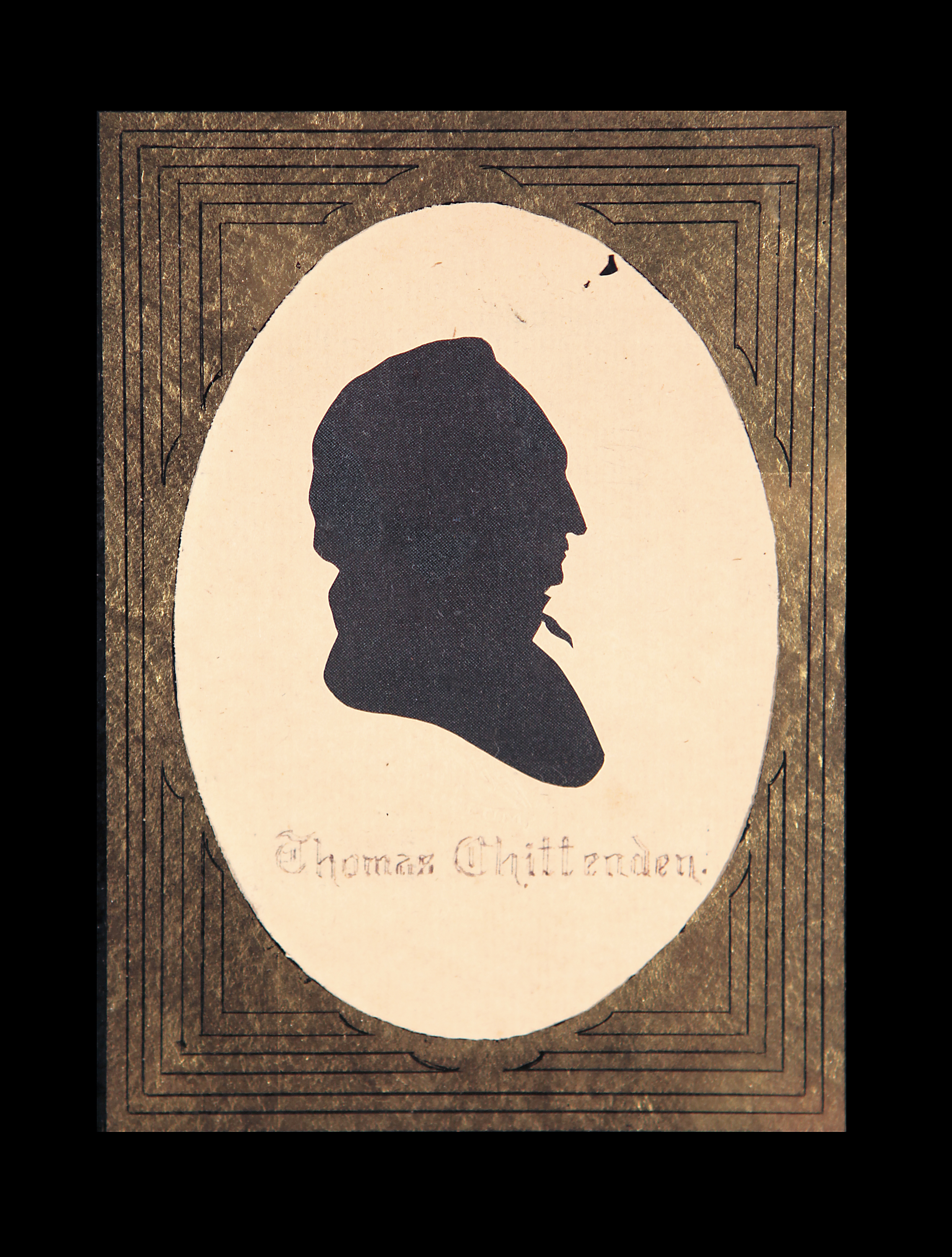Two-Dimensional Representations : Thomas Chittenden Silhouette
In the 18th and 19th centuries not everyone could afford the time or the money to have his or her portrait painted, and party for this reason silhouette making came into vogue. After the invention of the tracing machine, silhouette making occurred on a mass scale all across the United States. In fact the Peale Museum had a “Physiognotrace Machine” where anyone could get a reproduction of themselves for around 8 cents.
Silhouettes became a personal commodity; people filled scrapbooks and albums with images of their friends and family. Only with the invention of photography in the mid-19th century was silhouette-making eclipsed as a cheap means to reproduce likenesses.
Charles Willson Peale, a renowned painter, is the purported creator this silhouette of Thomas Chittenden. The truth, however, is murkier. Two New York antique dealers, Mr. and Mrs. Collins, acquired the official Peale Museum stamp in the 1920s and created hundreds of Peale silhouette forgeries. The broadness of cutting, the straight nose, the undefined collar as well as the placement of the Peale stamp indicate that this silhouette, lacking the quality and detail of a true Peale silhouette, is one of those forgeries.

